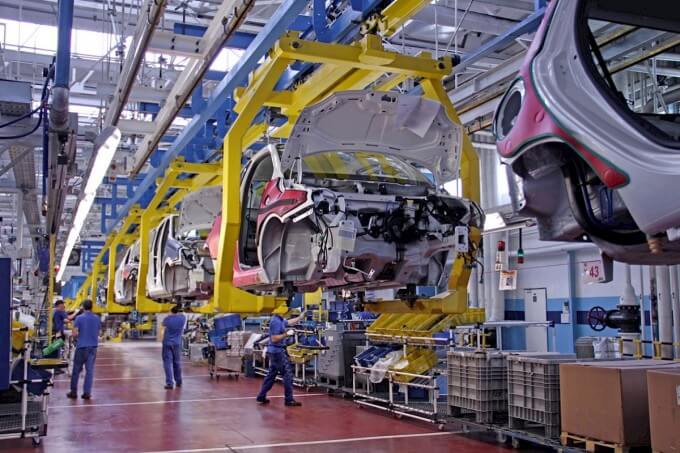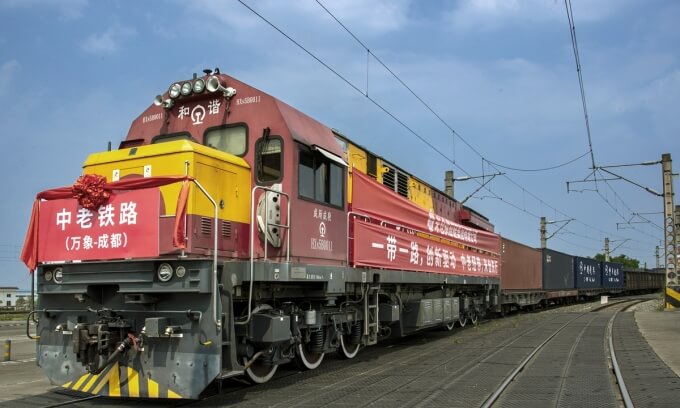Forbes makes a forecast that when Logistics 5.0 is popular, human health and qualifications are the company’s vital concern.
The Covid-19 pandemic has had many impacts on supply chains including the manufacturing and logistics sectors. However, this is also an opportunity to promote the shift of the industry based on the factors of resilience, competitiveness and sustainability.
Solving challenges during the pandemic such as shortage of containers, social distancing, etc. has made enterprises learn many lessons. Efficient handling of supply chain disruptions has created a technological transformation known as Logistics 4.0. During this period, the manufacturing and logistics industry has promoted the integration of its ecosystem with advanced technologies, such as the use of the Internet of Things (IoT), artificial intelligence (AI), robots, language processing and lean manufacturing in supply chain management.
However, as the pandemic has had more positive changes, activities in the supply chain are required to transform towards sustainability and digitalisation. To satisfy both of the above demands, Logistics 5.0 is considered by experts as a “forced revolution”.
Taking a look back at Logistics 4.0 in the supply chain
The core of Logistics 4.0 includes technologies and their incorporation into the logistics sector.
Logistics 4.0 uses information to complement and improve supply chain management activities and processes. Blockchain, cloud computing and other technologies help secure data exchange and keep the logistics sector conveniently decentralized.
At the same time, smart devices such as warehouse management systems, robot-based transport and container-based transport also act as a pillar in the automated supply chain. Data readers, smart shelves and self-driving vehicles also help simplify human workflows.
In addition, enterprises will use shipments, supplies and orders that are prepared and packaged depending on sales forecasts aggregated by Big data and machine learning.
The application of GPS technology helps to track the exact location of commodities in real time, thereby reducing the risk of loss, allowing optimization of routes and enhancing control of commodities.
RFID tags (Radio Frequency Identification tags) are accessible via tablets and mobile phones, helping operators to interact and track their commodities at any time.
All of these technologies, when being integrated, will help drive performance, increase flexibility, transparency, quality and responsiveness of the entire supply chain. A physical network is created in the supply chain by connecting the operation of these technologies.
Digitization of Logistics 4.0 allows companies to keep pace with changes in customer demands through effective, rapid and accurate innovation and improvement.
However, while Logistics 4.0 separates the activities and tasks of machines from humans, experts are giving an idea of the Fifth Industrial Revolution (Industrial Revolution 5.0) or Logistics 5.0 – with an ambition that will reconcile man and machine.
While Logistics 4.0 identifies that automation that will enhance job performance, Logistics 5.0 explores the idea of potential benefits by combining human and machine workforces.
How will Logistics 5.0 change the game?
Logistics 5.0 is considered as the recommended solution for the Industrial Revolution 5.0 model. Similar to Industrial Revolution 5.0, Logistics 5.0 also focuses on knowledge and sustainability. This is a transition that focuses on workers and minimizes the environmental impacts.
Logistics 5.0 will allow companies to make the change from full automation to a combination of this process and human effort, while not compromising their competitiveness and profitability.
The leading idea of Logistics 5.0 aims to prioritize the environment when integrating with technologies. This concept requires the logistics industry to move in three directions: prioritizing the human factor, ensuring resilience, and enhancing sustainability.
In Logistics 5.0, workers are seen as a long term investment. Their health and qualifications are of vital concern to the company.
Technologies should be replaced, supplemented and adjusted to the demands and requirements of workers. This is to ensure that the company can receive benefits by attracting high-quality talents to work and maintain their services over the long term.
These clearly indicate that the Logistics 5.0 model is more concerned with improving and enhancing the ecological and social benefits than Logistics 4.0, which is mainly dependent on technology. Thereby, this development will pave the way for a better and more sustainable logistics industry in the future.
Red Rose (according to Forbes)
 Address: Room 512, TD Busines Building, Lot 20A, Le Hong Phong Street, Ngo Quyen District, Hai Phong
Address: Room 512, TD Busines Building, Lot 20A, Le Hong Phong Street, Ngo Quyen District, Hai Phong Email:
Email: 






 admin
admin 04 Jan, 2023
04 Jan, 2023




